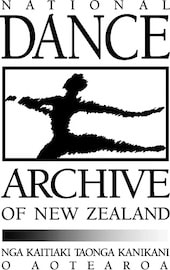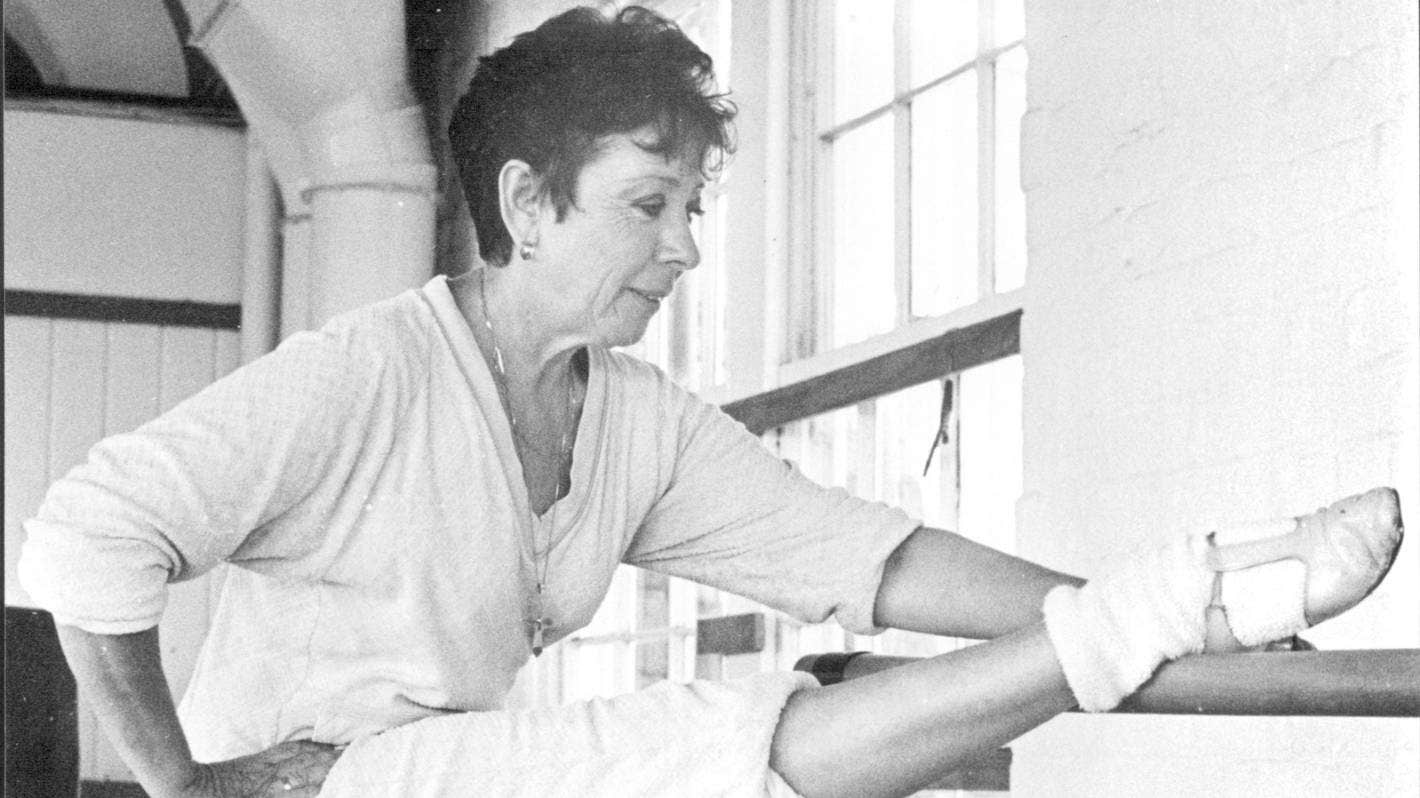|
Thus obituary appears courtesy of Marianne Schultz and the Royal New Zealand Ballet.
Dorothea Zaymes Ashbridge, ONZM, 1928 – 2021 Dorothea Ashbridge, ballet dancer, teacher, coach, choreographer and international ballet competition adjudicator, died in Auckland on December 30th, 2021. She was 93. More photos of Dorothea can be found here. A consummate artist with undying passion and knowledge of ballet, or as her student Douglas Wright MNZM described her, a ‘mythic character with a formidable reputation’, Dorothea shared her gifts and wisdom with thousands of professionals and students for over fifty years, always with a twinkle in her eye and polish on her nails. Prior to arriving in New Zealand in the 1960s, Dorothea danced for just under twenty years with London’s Royal Ballet, dancing many soloist roles and pas de deux, including The White Cat in Sleeping Beauty with Douglas Steuart and in works by the great ballet choreographers of the twentieth century including Sir Frederick Ashton and George Balanchine. This video can be found through this link. Born March 4th, 1928 in Cape Town, South Africa, Dorothea Zaymes was the fourth of eight children, six girls and two boys. She began her ballet studies as a young child, with her teachers commenting that she possessed a natural turn-out and thus suited for ballet. Dorothea progressed through the syllabus training of both the British Ballet Organization (BBO) and the Royal Academy of Dancing (RAD), the latter under the tutelege of Olive Deacon. In early 1946 at age 17, she left for London at the invitation of the Sadler’s Wells Ballet School. Within three months she was asked to join the company, then called the Sadler’s Wells Ballet (christened The Royal Ballet after gaining the Royal Charter in 1958). The soloists in the company at this time included Margot Fonteyn, Robert Helpmann, Moira Shearer and Beryl Grey. Dorothea shared the stage with these illustrious stars of ballet in her first appearance with the Sadler’s Wells, Coppelia. The glamour of The Royal Ballet at this time cannot be underestimated. Dorothea recalled the company compared favourably to the Beatles owing to the ‘ballet mania’ the dancers were met with, both in London and on tour, with fans camping out overnight outside theatres to ensure tickets to the evenings’ performance. Along with the obligatory meetings with members of the Royal family attending a performance, the company hob-nobbed with local politicians and celebrities across the globe. A police escort to a mayoral reception in New York City was one such occasion. In August 1958 Dorothea Zaymes married fellow Royal Ballet dancer, the New Zealander Bryan Ashbridge. Their son Mark was born in 1965. Wellington-born Bryan Ashbridge studied ballet as boy with Joe Knowsley. By the time he was a teenager he was encouraged to travel to Australia to further his RAD examinations, becoming the first male New Zealand dancer and youngest, at age 13, to gain the Solo Seal. In 1947 he arrived in London to join the Sadler’s Wells Ballet. In the 1950s Bryan Ashbridge made several trips back to New Zealand as a featured artist, partnering fellow New Zealand ballerina Rowena Jackson. Soon after the birth of their son, and with both dancers ending their ties with The Royal Ballet, the family travelled to New Zealand where Bryan was offered work with the NZBC as a television producer. In 1966 ‘Dolly’, as she was known to friends in Auckland, accepted a job which her good friend Max Cryer referred to as an offer ‘out of left field.’ Embracing the challenges and opportunities on offer in this small nation of ballet-lovers, she found that her skills as a teacher and choreographer in demand. As Cryer recalled at the 2011 Tempo Dance Festival event honouring her many contributions to New Zealand dance, the television producer Kevin Moore approached Dorothea asking if she would be the choreographer for his latest project; a local entertainment programme featuring pop musicians accompanied by dancers in tight mini skirts, tall boots and long hair. C’mon!, a ‘tightly scripted black and white frenzy of special effects, pop-art sets, go-go girls and choreographed musicians’ is renowned for its entertaining and ground-breaking style that epitomized the swinging sixties. As resident choreographer for the immensely popular television music programmes, C’mon! and later Happen-Inn, Dolly put the dancers front, centre, around and above New Zealand’s most popular musical artists. As such, the popularity of go-go dancing in 1960s New Zealand can be ascribed to Dolly Ashbridge. See footage of C’mon! here. Following her television work, Dorothea participated in teaching and coaching with local ballet schools, notably Val Murray’s and Phillippa Campbell’s in Auckland, summer schools throughout the country and with the New Zealand Ballet in Wellington in 1970 for the production of Carmina Burana. At this time she became an international juror for ballet competitions in France, Japan and China. In 1971 Bryan was appointed Artistic Director of the ballet company and Dorothea worked alongside her husband as a teacher and rehearsal coach. However, within two years Bryan Ashbridge was appointed Associate Artistic Director of the Australian Ballet and left for Australia permanently. Soon after the couple divorced. Dorothea returned to Auckland and in the late 1970s her daily ballet class in central Auckland had a cult feel about it. The studio above the shops on Auckland’s lively Karangahape Road attracted a mixture of die-hard ballerinas, older professionals, child students and the young dancers of Limbs Dance Company. It was these classes that eventually led Dorothea becoming the resident Ballet Mistress for that company. The Limbs dancers, though petrified at times of her dismissive comments and tortuously difficult enchaînement, valued her commitment and perseverance in ‘whipping them into shape.’ Douglas Wright, in his autobiography Ghost Dance, likens his first encounter with Dorothea as ‘going to the dentist’ as her reputation for precision, repetition and exactitude in class was legendary and daunting. Of his first class in 1980 he recalled entering the studio and spying Dorothea ‘dressed entirely in pink, sitting in a haze of cigarette smoke at the piano, curling her eyelashes.’ Nonetheless, all of the Limbs dancers adored Dorothea and her classes left indelible marks on the careers of New Zealand’s finest contemporary dancers, too many to name here, but including Mary Jane O’Reilly, Mark Baldwin, Chris Jannides, Debra McCulloch, Susan Trainor, Shona Wilson, Shona McCullagh, and Taiaroa Royal, who called her the ‘epitome of elegance’. When she ceased teaching many of her former students created lasting and close friendships with their mentor, teacher, and, at times, harshest critic. Adroitly managed by the late Sue Paterson ONZM, Limbs attended the American Dance Festival (ADF) in Durham, North Carolina in 1981 with Dorothea an integral part of the Limbs entourage. As O’Reilly recalls, ‘a whoosh of whispers went round the campus when Dorothea arrived.’ Everyone was curious about this woman who observed classes dressed in a pink tracksuit, high heels, and full makeup. Thanks to Dorothea’s sartorial style and mysterious air, Limbs stood out amongst the myriad of dancers and teachers clad in the ubiquitous postmodern 1980s attire of ripped T-shirts, sweatpants, and bare feet. Dorothea’s association with Limbs proved to be one of the most rewarding and long lasting of any in her dance career, as she stated, ‘my time with Limbs were the most wonderful years of my life.’ Following the closure of Limbs in 1989 Dorothea was invited to become the ballet teacher for the Performing Arts School in Auckland, whose dance programme became a part of Unitec in the mid-1990s. In 2007, at age 79, Dorothea performed in Tempo Dance Festival in a duet choreographed by O’Reilly with former Limbs dancer Debra McCulloch. The still and stately presence of Dorothea coupled with the steady partnering of McCulloch was both mesmerizing and thrilling. Earlier, in 2003, Dorothea appeared in a film by Catherine Chappell and Alyx Duncan shot in the bunkers on Auckland’s North Shore. Timeless depicts three dancers at various stages in their dancing lives, the film can be found here. In her later years Dorothea, aka Thea, Doro, Dolly, enjoyed a busy social calendar, including attending performances, shopping, dining out, studying Tai Chi, and socialising with her many friends and family. She is survived by son Mark, daughter-in law Catherine, grandchildren Stella, Lucie and Jimmy and siblings Kay, Rita, Julia and George as well as several nieces and nephews. Her adopted family in New Zealand, Babe and Jack Heap, Sue and Tony Mair and their children, are especially remembered as providing shelter, support and enduring love for many decades. In 2019 Dorothea was awarded the New Zealand Order of Merit for Services to Ballet. Dorothea’s Radio New Zealand interview can be found here. Though small in stature, Dorothea’s shadow looms large over generations of dancers in Aotearoa New Zealand and her legacy lives on in the dances and dancers of today. Haere, Haere, Haere atu rā. Haere rā, e te Rangatira, ki ōu tipuna. Moe mai rā i roto i to moenga roa te rangimarie. Marianne Schultz
0 Comments
Your comment will be posted after it is approved.
Leave a Reply. |


 RSS Feed
RSS Feed
